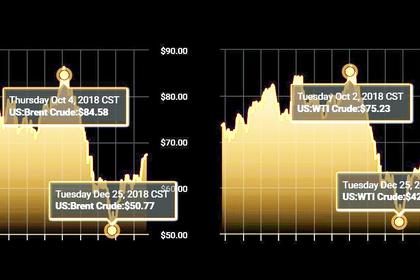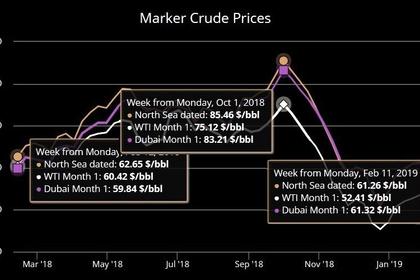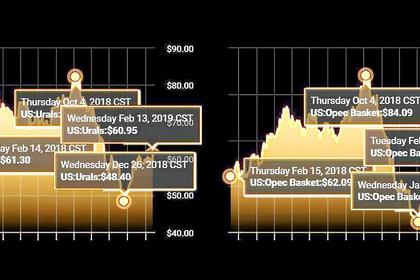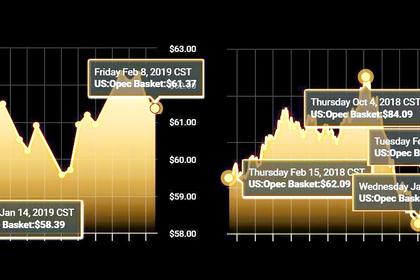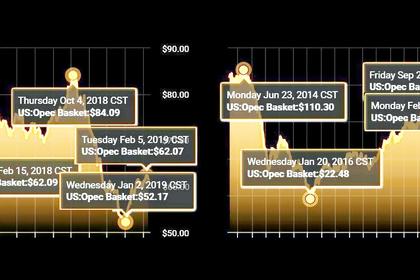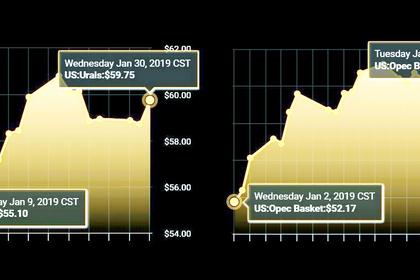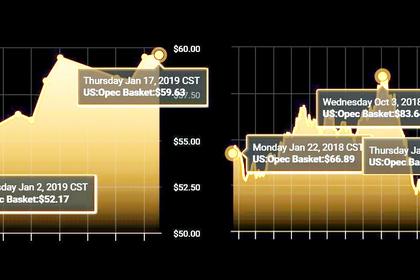РЫНОК НЕФТИ СТАБИЛЕН
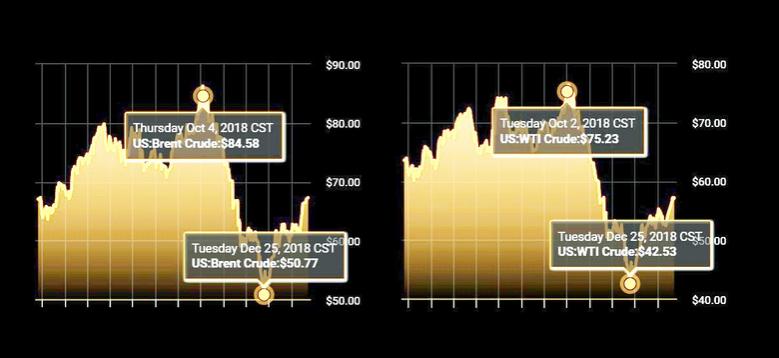
МИНЭНЕРГО РОССИИ - Министр энергетики Российской Федерации Александр Новак в интервью интернет-изданию "Газета.ру" рассказал о развитии отраслей ТЭК, перспективах международного сотрудничества в энергетике, а также ответил на вопросы читателей.
Говоря про перспективы продолжения транзита российского газа через Украину, Александр Новак отметил, что Россия уже находится в стадии обсуждения возможности заключения нового транзитного контракта. Учитывая текущие и будущие потребности Европы, сохранение транзита через Украину вполне возможно.
"Мы видим потенциал роста импорта газа. У нас будут загружены не только новые газопроводы и транспортные структуры. Есть потенциал, в том числе, и для того, в качестве маршрута использовалась газотранспортная система Украины. Этот объем зависит от потребностей непосредственно Европы", - рассказал Министр.
Отвечая на вопрос о влиянии европейской Газовой директивы на "Северный поток-2", Александр Новак отметил, что суть документа заключается в распространении действия третьего энергетического пакета на офшорные проекты.
"На наш взгляд, юридически в этом нет никакой необходимости", - выразил мнение глава Минэнерго России.
В ответ на вопрос читателей про реализацию соглашения ОПЕК+, Александр Новак отметил, что Россия будет постепенно выходить на уровень сокращения в 228 тыс. баррелей в сутки.
"В настоящее время мы полностью соответствуем заключенным договоренностям: исполняем обязательства и постепенно сокращаем добычу. В течение двух месяцев, к 1 февраля, мы вышли на сокращение добычи где-то в 90-100 тыс. б/с относительно октября 2018 года. Учитывая, что в декабре у нас показатели добычи были выше, чем в октябре, где-то на 50 тыс. баррелей, относительно декабря сокращение сейчас составило уже почти 140-150 тыс. б/с. Это достаточно высокие темпы сокращения", - добавил он.
Благодаря сделке, в том числе, сохраняются стабильные цены на нефть, отметил Александр Новак.

"Сегодня мы видим на рынке более-менее спокойную, стабильную ситуацию, невысокую волатильность и более-менее приемлемые цены, которые устраивают и экспортеров, и потребителей. Мы считаем, что благодаря сделке, в первую очередь, достигнута такая стабильность", - подчеркнул он.
Говоря про исполнение нефтекомпаниями соглашения по сдерживанию цен на топливо, Александр Новак заметил, что цены на заправках остаются стабильными на протяжении уже двух месяцев.
"Я думаю, что такая ситуация не системная и не фундаментальная, а системно и фундаментально то, что поставлены задачи, созданы все необходимые инструменты в виде налогового регулирования, которые позволяют держать ситуацию на уровне существующих цен с темпами роста не выше инфляции. Прогноз по инфляции, напоминаю, согласно анализу Министерства экономического развития, составляет 4,3% по 2019 году", - добавил Министр.
В то же время, на заправках продолжает встречаться фальсификат. Для борьбы с ним ведомства применяют разные методы.
"Одно из направлений, которое мы прорабатываем вместе с Министерством финансов, ФНС, — это уплата акцизов. Многие российские компании обратились с предложением рассмотреть возможность переноса уплаты акциза на нефтепродукты не на оптовом звене, а на розничном – с тем чтобы акциз платили автозаправки", - рассказал Министр.
Говоря о потенциальном будущем российской энергетики, Министр остановится на вопросе развития Арктики.
"У нас огромный потенциал в Арктике: я называл вам цифры без арктического потенциала, потому что там месторождения мало исследованы, они еще не изучены до конца, там есть только оценка потенциала в качестве ресурсов. Это десятки триллионов кубических метров газа, миллиарды тонн нефти. Это пласт, который в будущем будет являться источником углеводородов для обеспечения потребности в энергии в мире в целом. А потребление энергии в мире будет расти. По прогнозам, примерно к 2035-2040 году на 30% больше будет потребляться энергии, а доля углеводородов будет сохраняться. Сегодня эта доля в мировом энергобалансе составляет примерно 85%", - добавил Александр Новак.
При этом, большую роль в развитии региона будет играть производство сжиженного газа.
"Есть другие рынки, куда трубопровод не проведешь, выгоднее сжижать газ и его возить. При этом на сегодняшний день наша стратегия заключается не только в развитии поставок трубопроводного газа, но и развитии нашей доли участия на рынке производства сжиженного природного газа и поставки его на рынки, куда невозможно дотянуть трубу. Поэтому здесь есть большой потенциал. Если у нас был один завод – «Сахалин-2» — общей мощностью примерно 11 млн тонн СПГ, то после ввода в прошлом году на полную мощность завода «Ямал СПГ» на севере ЯНАО производственные мощности уже равны более 27 млн тонн. Это порядка 9% мирового рынка, то есть буквально за последние несколько лет мы увеличили долю участия России на мировом рынке СПГ (с 4,5%). Наша задача – увеличить долю до 15-20%.", - заключил Министр.
Что касается бытового газа, то Минэнерго России усиленно работает над упрощением процедуры подключения для новых потребителей.
"На будущее мы хотим сделать так, чтобы все эти подключения проходили через единый портал электронных услуг – он разрабатывается в соответствии с «дорожной картой», — чтобы заявитель мог подать заявку на подключение, получить разрешения сразу на все процедуры, при этом чтобы у него был какой-нибудь электронный калькулятор, с помощью которого можно было бы рассчитать стоимость подключения. Такие сервисы уже есть в электроэнергетике, они работают", - отметил Александр Новак.
----
РЫНОК НЕФТИ СТАБИЛЕН

IRENA - Countries at the forefront of the energy transformation are getting more than a third of their energy from variable renewables like solar and wind, and they're doing it in a cost-effective manner. By making use of innovative solutions that allow to integrate a higher share of renewables into power systems, innovation holds the key to a cost-effective global energy transformation.
These findings come from a first-of-a-kind mapping and analysis of innovations that will transform the power sector, launched by the International Renewable Energy Agency (IRENA) today in Brussels. IRENA's Director-General Adnan Z. Amin presented the report in the presence of EU Energy and Climate Action Commissioner Miguel Arias Cañete at an official launch event hosted by the European Commission. The report "Innovation Landscape for a Renewable-Powered Future: Solutions to integrate variable renewables" contains the most in-depth assessment of the power sector transformation to date. It shows how synergies between different innovative solutions in business models, market design, enabling technologies and system operation are lowering the cost of integrating high shares of variable renewable energy (VRE), while making energy production, transmission and consumption more flexible and empowering a new generation of energy consumers.
Decarbonising the global power sector in line with the Paris Agreement objectives will require an 85% share of renewable energy in total electricity generation by 2050, IRENA's 2050 Roadmap estimates. By then, variable renewables would account for 60% of the total power generated globally. Moving to a new phase where the massive but cost-effective scale-up of renewables power is crucial, the power sector transformation is strongly accelerated by innovation trends in digitalization, decentralization and electrification of the end-use sectors. Understanding and learning from the experiences from leading countries in VRE integration is crucial to replicate and enhance innovation that can accelerate this transformation.
With close to 15% of VRE share in annual electricity generation today, the EU has the highest levels of variable renewables in power systems globally. "Europe has shown tremendous leadership in initiating the system-wide innovations needed to support the widespread adoption of renewables and decarbonise the global economy", said IRENA Director-General Adnan Z. Amin. "The region's success shows us that innovation is creating an energy transformation that is technically feasible and economically attractive. Innovation is the engine powering the energy transition and the global pace of innovation is accelerating. IRENA's new report will provide a clear, navigable and comprehensive guide on innovations being piloted around the world, aiming to support informed decision-making by all countries to deploy low-cost renewables and accelerate the global energy transition further."
EU Commissioner for Energy and Climate Action Miguel Arias Cañete reiterated the importance of renewable energy in helping the region to meet its climate objectives, "The EU has already started the modernisation and transformation towards a climate neutral economy. Implementing the EU's Clean Energy package will further boost innovation, and the EU can continue to show leadership and support the rest of the world by exporting innovative solutions in the fight against climate change. Innovation is central to our efforts, and this report from IRENA is a valuable contribution to become the world's first major economy to go climate neutral by 2050."
The new report identifies 30 key innovations and 11 innovative solutions in development by pioneering companies and backed by far-sighted governments around the world. By showcasing many examples of projects and pilots for the power sector transformation across the globe, it supports policy makers in adopting innovation frameworks built on the combination and synergies between innovative solutions. As a unique toolbox it will help decision makers to rethink their power systems and implement solutions that account for specific national circumstances.
Key Findings from the report:
- Innovation accelerates a cost-effective global energy transformation.
- Flexible power systems maximize benefits of the energy transformation. Innovation in power systems minimizes costs related to the acceleration of renewable energy.
- There are abundant innovative solutions to integrate VRE in power systems. However, policy-makers must adopt an innovation framework based on a systematic approach that creates synergies between innovations in technology, business models, market design and system operation, resulting in flexibility solutions to ensure a cost-effective integration of VRE at large scale.
- Power sector innovation trends i.e. digitalization, electrification and decentralization are ongoing trends that can further accelerate the power sector transformation.
- IRENA assessed 30 innovation types, clustered in four dimensions: enabling technology (e.g. batteries, EV, blockchain), business model (e.g. energy-as-a-service, aggregators), market design (e.g. time-of-use tariffs) and system operation (e.g. empowerment of DSO) in the report.
- IRENA estimates that if some flexibility options are implemented, investments necessary for the integration of a high share of VRE may sum up to 18 trillionUSD from today to 2050 – corresponding to the total investments required in additional renewable energy generation technologies.
- EU28 has been leading in VRE integration, with close to 15% of VRE share in annual electricity generation today, expected to increase to almost 50% by 2050. The three largest power systems in the world – China, India and the United States are expected to double their share of VRE to more than 10% of annual generation by 2022.
Full PDF version
-----
Earlier:

2019, February, 15, 11:50:00
BP - The 2019 edition of BP’s Energy Outlook, published today, explores the key uncertainties that could impact the shape of global energy markets out to 2040. The greatest uncertainties over this period involve the need for more energy to support continued global economic growth and rising prosperity, together with the need for a more rapid transition to a lower-carbon future
|
| |

2019, February, 1, 10:50:00
PLATTS- Germany added almost 3 GW of solar capacity last year, the highest annual figure since 2013 and 68% more than 2017, German solar association BSW said Thursday. Total installed solar PV capacity was 45.929 GW by end-2018, with 377 MW added in December alone.
|
| |

2019, January, 21, 11:20:00
U.S. EIA - EIA expects non-hydroelectric renewable energy resources such as solar and wind will be the fastest growing source of U.S. electricity generation for at least the next two years.
|
| |

2018, December, 14, 08:55:00
PLATTS - Renewables' share in Germany's power mix is set to reach 38% this year, ahead of the government's 2020 target of 35% but below-trajectory for 2030's 65% target, utility lobby group BDEW said Thursday.
|
| |

2018, December, 14, 08:50:00
EBRD - the Bank will no longer finance thermal coal mining or coal-fired electricity generation. The Bank will also stop funding any upstream oil exploration, and will not finance upstream oil development projects except in rare and exceptional circumstances, where such investments reduce greenhouse gas emissions.
|
| |

2018, December, 7, 08:10:00
WBG - “There are literally trillions of dollars of opportunities for the private sector to invest in projects that will help save the planet,” said IFC CEO Philippe Le Houérou. “Our job is to go out and proactively find those opportunities, use our de-risking tools, and crowd in private sector investment. We will do much more in helping finance renewable energy, green buildings, climate-smart agribusiness, urban transportation, water, and urban waste management.”
|
| |

2018, December, 7, 08:05:00
REUTERS - Electricity generation from French wind turbines rose 17.5 percent in October, boosting French power generation from renewable sources which rose during the month alongside nuclear output, while coal and gas-fired generation fell.
|


